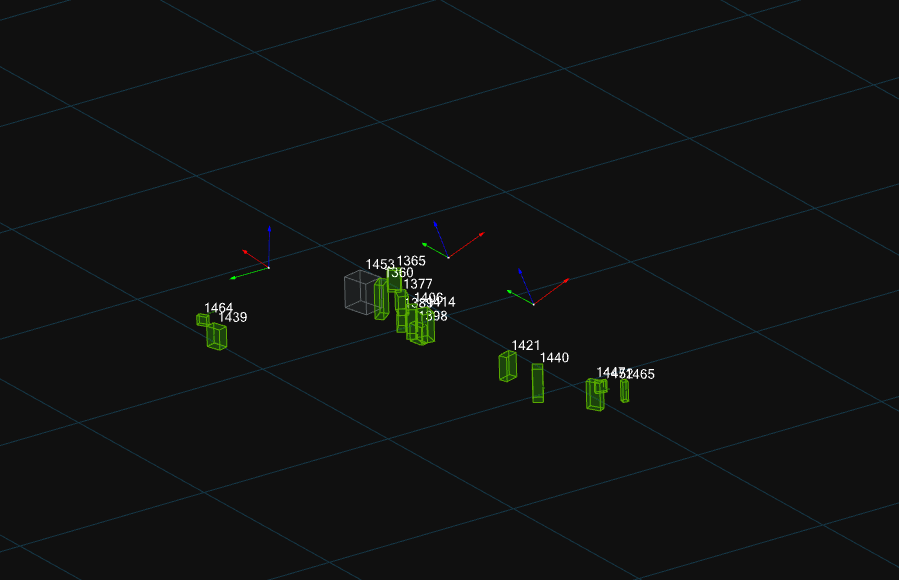Lidar Technology for People-Tracking : A Detailed Look
Lidar Technology for People-Tracking : A Detailed Look
By Gary Angel
|January 22, 2021

LiDAR Technology has a number of unique properties that make it well suited to certain applications of people-tracking and journey measurement. LiDAR sensors have gained a lot of notoriety from their use in automotive self-driving applications and they’ve also been popular in security situations. But they provide similar people-measurement capabilities to traditional camera sensors and can be used for a range of traditional people-measurement applications including Occupancy Management, Queue Management, Display Analytics, and full journey tracking. To understand when and why you might choose LiDAR over traditional camera sensors, you have to understand LiDAR ’s unique characteristics.
What is LiDAR ?
A LiDAR sensor sends out pulses of light and then tracks the returns from them – very much like radar. This active beaming strategy is what makes LiDAR special. It isn’t dependent on lighting conditions – which is one reason it’s so popular in Loss Prevention and Security applications – and it works well outdoors. But LiDAR isn’t just a security solution. Some of its other characteristics make it quite attractive for general people tracking.
First, LiDAR has great range. A single LiDAR sensor can cover a very large unobstructed area – on the order of a football field for some sensors. Unobstructed is the key word in that sentence. In a cluttered factory or retail environment, you won’t get anything like that kind of coverage because of blocked lines of sight. In this respect, LiDAR is pretty much the same as camera. It needs to be able to see enough of a person to recognize and track them.
Still, a LiDAR sensor can often cover 5-10x what a typical video camera will cover. This better coverage may be partially or even completely offset by the higher cost of the LiDAR sensor. They are typically 5-8x the cost of a traditional camera sensor. So depending on the exact coverage and cost multiples, LiDAR sensors can be a fair amount cheaper OR more expensive in any given situation.
However, there’s a second cost advantage to LiDAR that can be really big. In many deployments, we find that the installation cost of a camera sensor is about equal to its purchase cost. LiDAR sensors cost about as much to deploy as traditional camera sensors – but if you are getting 5-10x the coverage per sensor, you are installing 1/5 to 1/10 as many sensors. In other words, the installation cost of LiDAR might be a fraction of a large matrixed camera installation.
In addition to great coverage, LiDAR sensors have several other important advantages.
The first is their ability to work indoor/outdoor and without traditional lighting. This makes LiDAR a remarkably flexible solution capable of handling things like city blocks, ice rinks, stadium concourses, playgrounds, amusement parks, etc. that would be impossible with traditional video.
It also makes LiDAR a potentially interesting solution to the great LP/measurement problem. Many, many enterprises would love to combine LP equipment with measurement. For a variety of reasons (to be covered in subsequent posts), this often just isn’t possible or practical. With LiDAR , it can be.
Another advantage is that unlike cameras, LiDAR sensors “paint” the entire scene. This is really useful for things like our merchandising analytics solution because they can keep track of distances and display locations. In real store environments, we’ve had significant challenges with tables and other unfixed displays getting moved and messing up our camera positioning logic. LiDAR provides a nice way to manage that.
Finally, LiDAR sensors build a point cloud that is very detailed. When positioned close to a display, a LiDAR point-cloud can achieve centimeter level accuracy – again, making it ideal for things like merchandising analytics where you need to analyze product touches or interactions. This also helps LiDAR do a significantly better job keeping track of people and not confusing them in crowded situations. That makes it more accurate for full journey tracking.
There are a few things LiDAR can’t do that traditional video can and there is at least one place where it’s better or worse depending on your priorities. LiDAR can do certain kinds of object and shape recognition, but it’s not going to provide gender and age classifications that might be available on a video sensor.
Similarly, LiDAR might be viewed as better from a PII perspective than a traditional measurement camera since no image is captured – just a point cloud. But if you want an image, that’s a bad thing not a good thing.
On the whole, there’s a lot to like about LiDAR for people-tracking. It’s a very cool technology with real advantages for people measurement. Our platform integrates LiDAR data identically to what we do with camera sensor – so from an analytics perspective it delivers identical information.
Ultimately, the economics of LiDAR depend very much on coverage and space. Particularly when installation costs are factored in, it can be both cheaper and more effective than traditional camera. But in some spaces, it’s not. An individual sensor might be too expensive to be useful in a single camera application like door counting or over a single display like an Endcap. And depending on a variety of space-specific factors, LiDAR may look like a bargain or luxury item. In general, the bigger and more open your space, the better the case for LiDAR in people tracking.